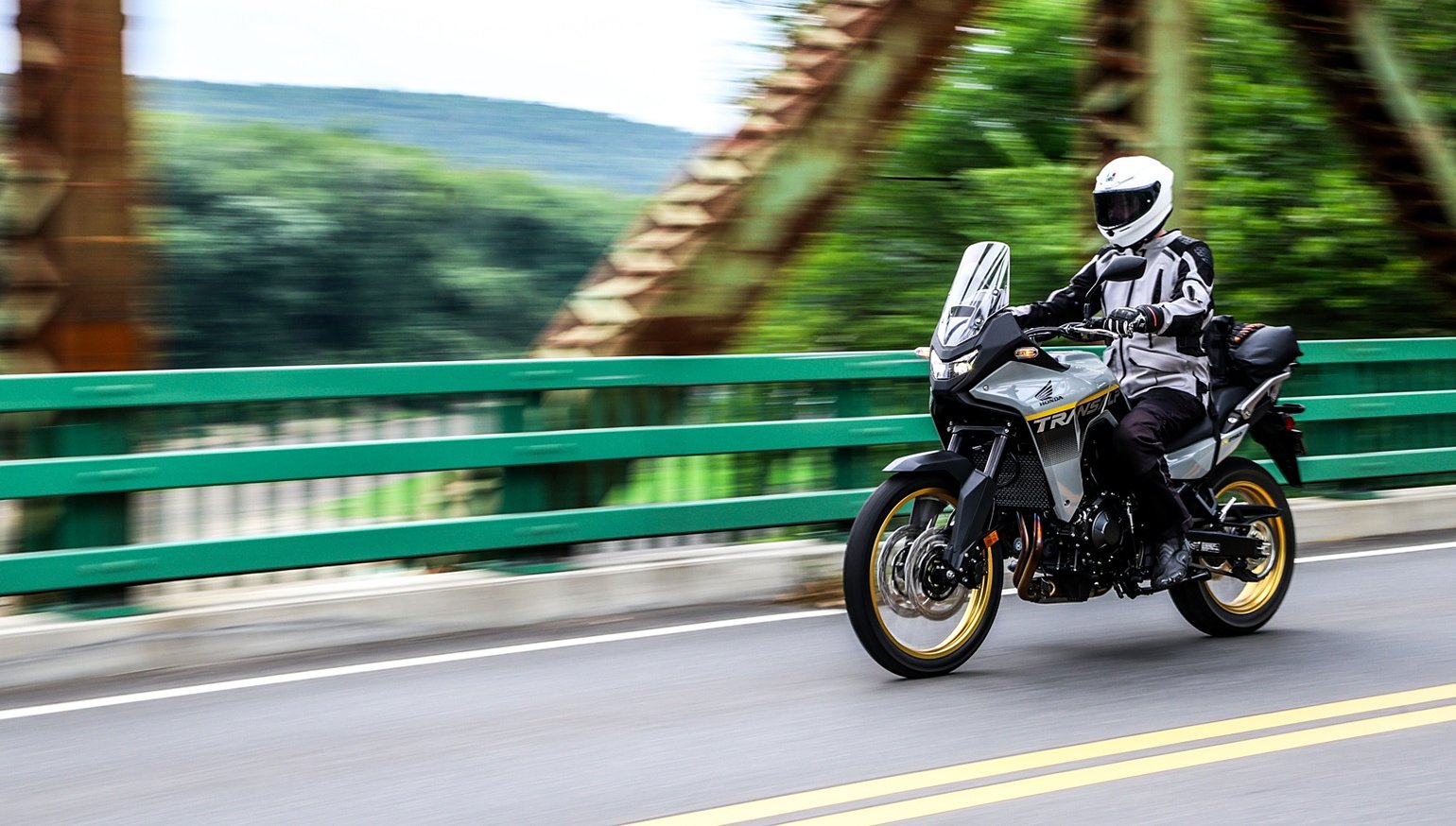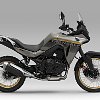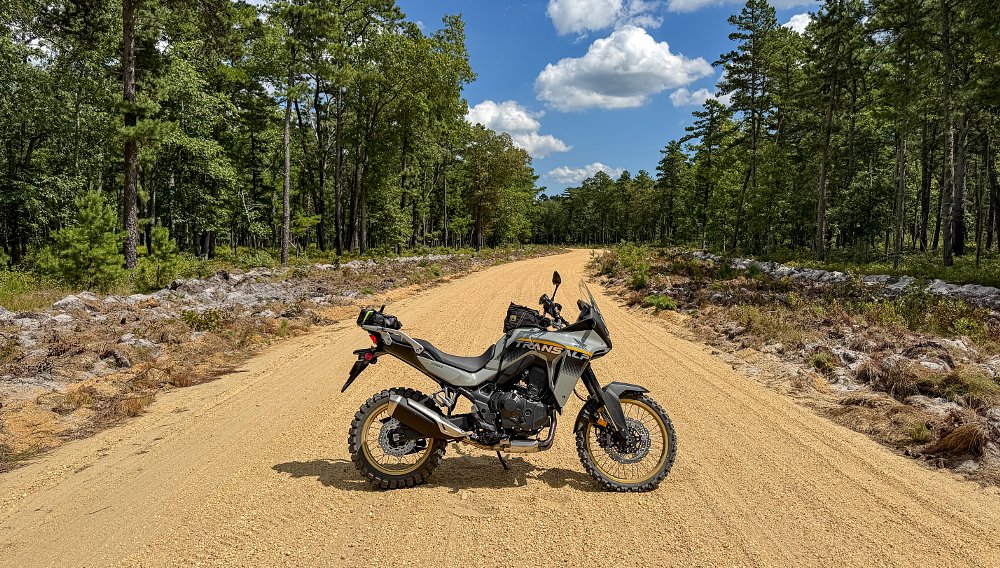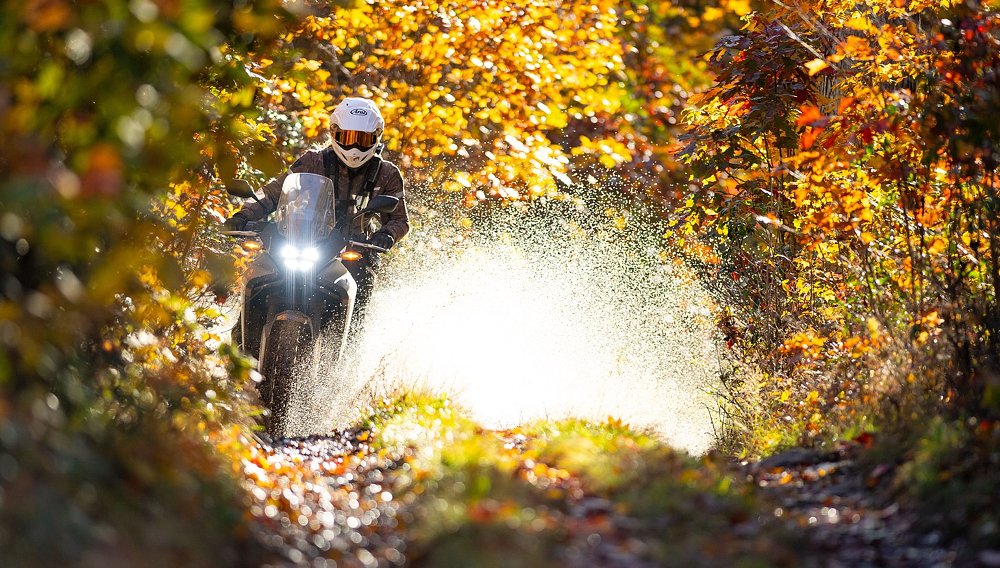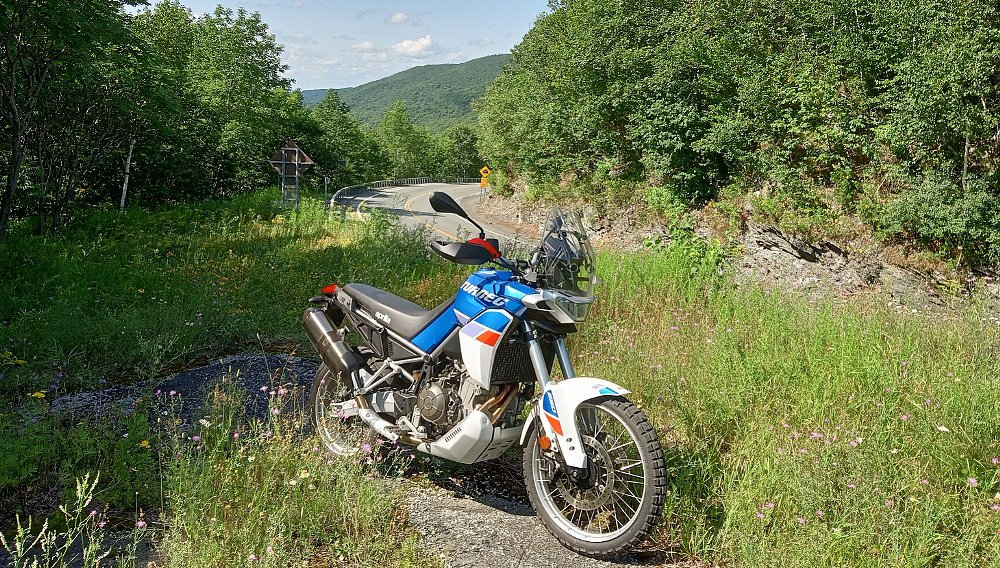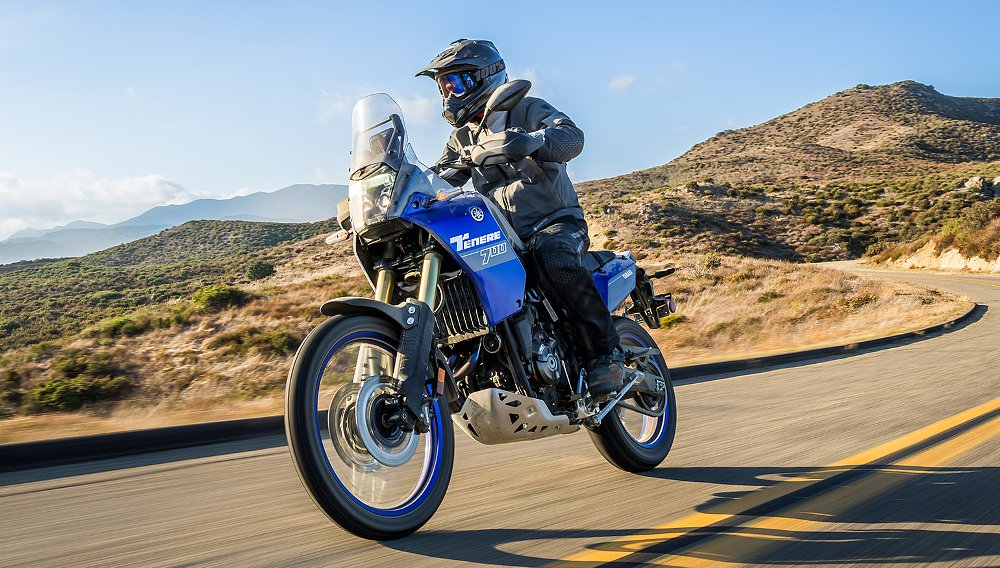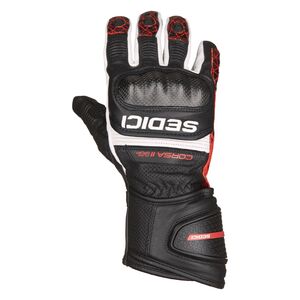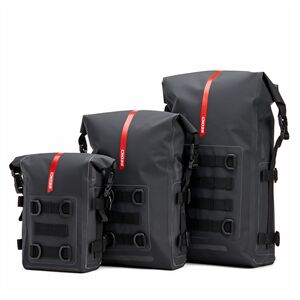Some people want one motorcycle that can do it all. Myself, I'm not in that group. I'd rather split my motorcycle budget among two or three less expensive bikes aimed at different tasks, rather than one more expensive one that tries to be universally competent. But if you are a one-bike kind of rider, whether through preference, budget, or parking space, the Honda Transalp makes a good argument for itself.
Lots of riders are migrating to the middleweight adventure-touring category as the sweet spot in motorcycling and, depending on your particular mix of road and off-road riding, the Transalp could be a top contender. Does it deliver the versatility needed to be one motorcycle to do it all? To find out, I teamed up with my gnarly adventure-riding friend, Spurgeon, to do a more thorough evaluation of the Transalp, lightly revised for 2025 but still sporting an attractive MSRP of $9,999. I would do the long-distance road testing, which takes more stubborn determination than talent, and Spurgeon would do the off-road testing, which takes some actual talent and determination. We start today with part one, the road test.
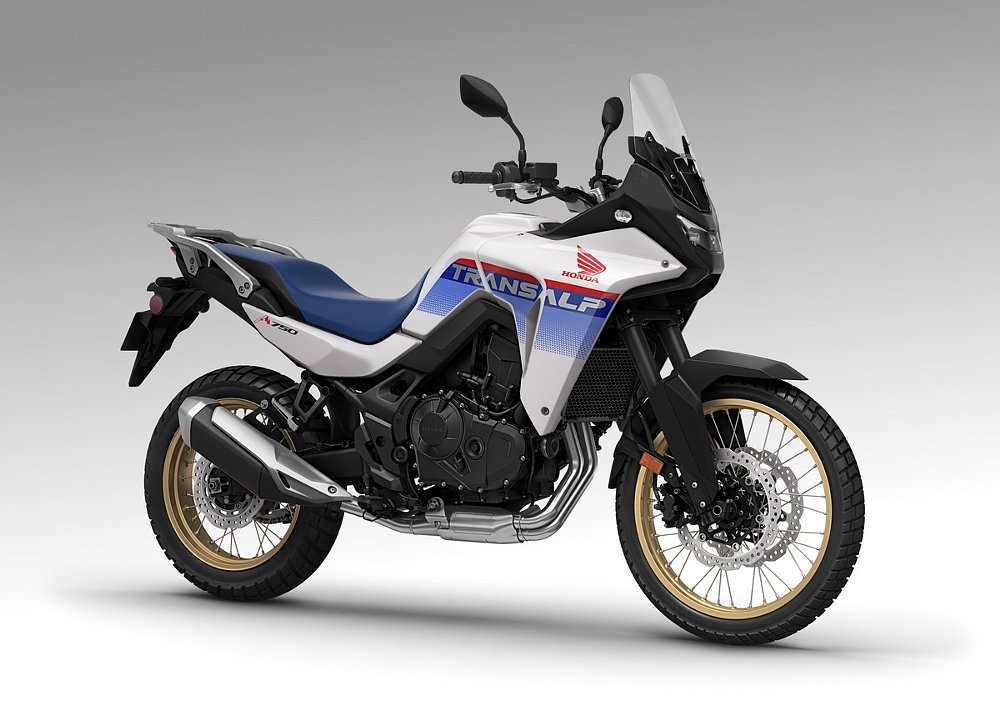
2025: A light refresh and real colors
While the Transalp gets a few modest updates for 2025, the basics are still the same as the 2024 model that our guest tester Liz Kiniery evaluated positively nearly two years ago. The middleweight adventure-tourer weighed 472 pounds on the RevZilla West scales when Zack tested it for Daily Rider, where it ended up ranking first on the 2023 leaderboard. It's powered by Honda's Unicam 755 cc parallel twin, which uses a 270-degree crank and has a sound and feel that aren't the p-twin bland many buyers lament today. That engine comes from the CB750 Hornet, so it carries a few features you might not expect on an adventure bike, such as a standard quickshifter, slipper/assist clutch, and a high-revving nature.
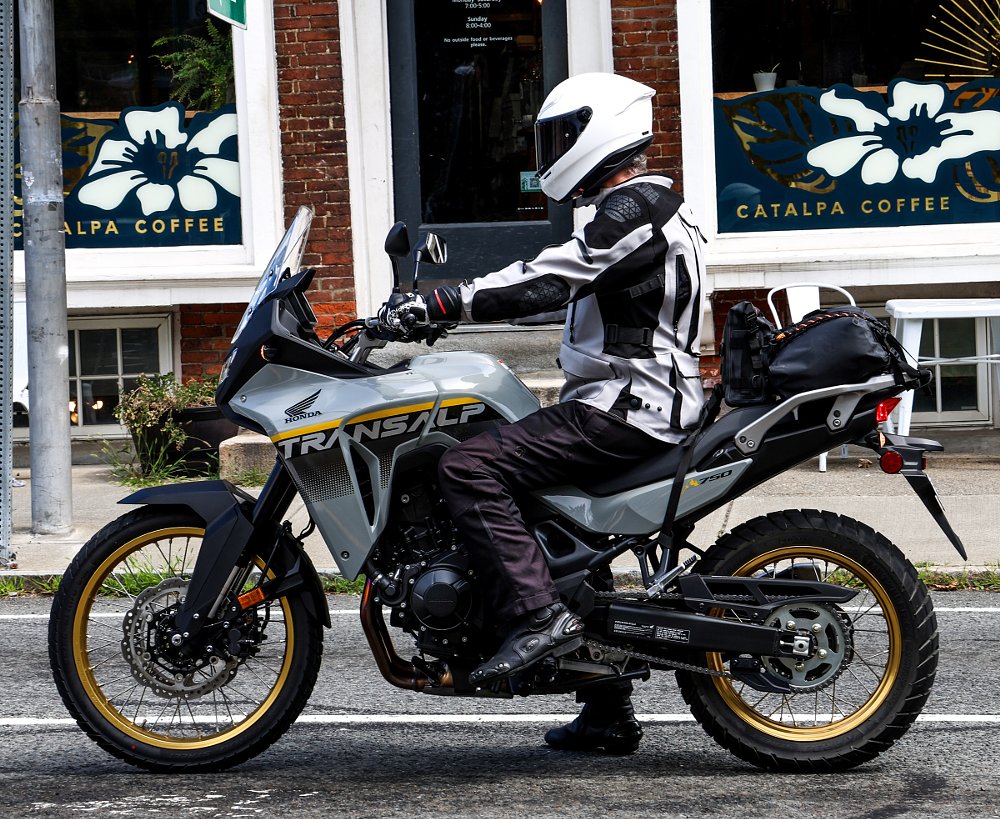
Features you would expect, since this is the adventure-touring category, include the spoked wheels in 21-inch front and 18-inch rear sizes, and a "Gravel" ride mode to go with the Sport, Standard, and Rain ride modes, along with two fully customizable User modes. Just as I found when I tested the Hornet, the Transalp's left switchgear is refreshingly uncluttered, not studded with a dozen buttons.
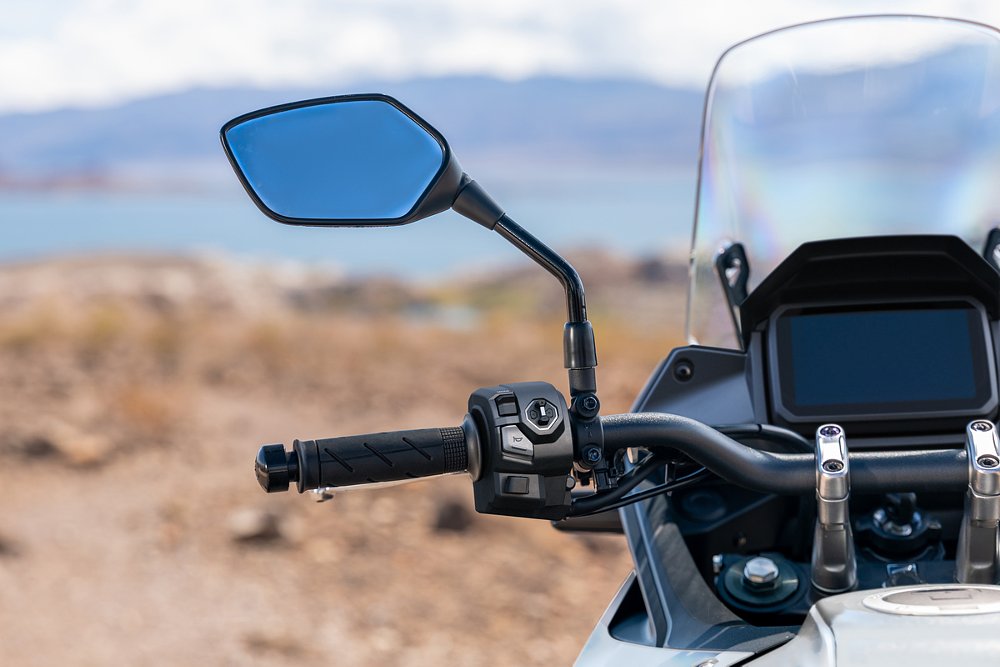
A separate mode button allows you to switch ride modes on the fly and a four-way joystick-type switch lets you access the menus for other settings. I found it was pretty easy to figure out and use, though I encountered a couple of minor things to complain about. Consider it the price you pay for the lack of buttons on the switchgear pod. You have to dive into the menus for every adjustment. So if the temperature drops and you want to raise the setting on the heated hand grips by a level or two, it's not a quick push of a button. You can navigate through the menu and adjust the heat, but it's multiple steps that take your eyes away from the road and I'd recommend waiting until you're stopped. Similarly, the procedure for resetting the tripmeter on the Transalp requires more steps than on any other motorcycle I can recall.
Changes to the Transalp for 2025 are subtle. The front of the bike is redesigned, with a new aero duct and windscreen intended to improve air flow, and a new dual-projector headlight (all lights are LED). The digital display is now a five-inch TFT unit, a bit larger than before. The front and rear Showa suspension parts are still adjustable only for preload and retain the same travel, but Honda tweaked the internals with the goal of making the Transalp perform a bit better off-road. Compression and rebound damping were increased at the rear and decreased in the fork.
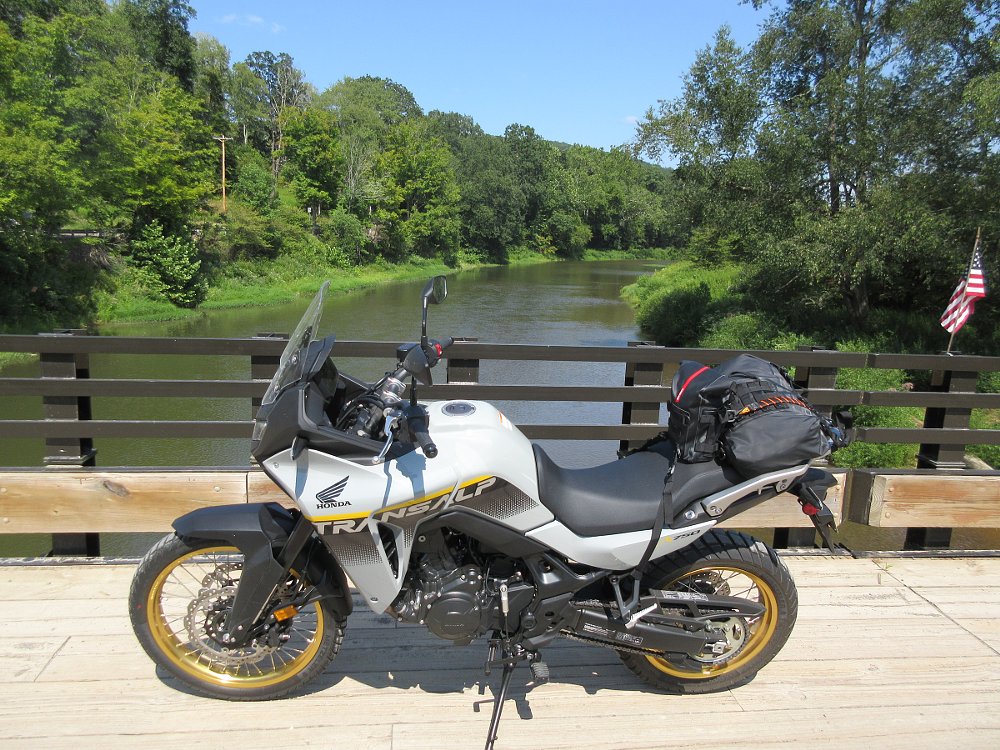
Also new for 2025, the Transalp offers smartphone connectivity with Honda's RoadSync app. The app allows you to use that same switch to handle phone calls, messages, check weather forecasts, listen to music, and for navigation. RoadSync is nice to have, but my prediction is that many Transalp owners will end up not using it. Why do I say that? Well, to use it you have to download the app to your smartphone, pair your phone with the motorcycle and your Bluetooth communications unit. Then, if you're using navigation, for example, the app will give you turn-by-turn voice instructions. But you probably already have that capability with an existing app on your phone and your Bluetooth communicator, so you may decide you don't need the little arrow on the motorcycle's display pointing out your turns. Alternatively, if you want the fuller detail of a complete map, you still have to mount your phone where you can see it. So I expect RoadSync will be more than some riders want and less than other riders want. But if you fall in the sweet spot, it's now available.
Same as before, the Transalp includes four preset ride modes: Standard, Sport, Rain, and Gravel. Two customizable User modes allow you to set your preferred combination of power delivery, traction control level, and engine braking, plus you can choose to turn off ABS at the rear wheel. Note that if you turn off rear ABS and turn off traction control in one of your two User modes, those two settings will revert to ABS on and traction control at the lowest level the next time you turn off the motorcycle. The power and engine braking settings you chose for your User mode will remain unchanged.
I personally like the Transalp's appearance. To me, it's a svelte and modern update of the original Transalp, which sold well in Europe, was ahead of its time here in the United States and was only offered in 1989 and 1990, and then, like some other sales flops, became a bit of a cult bike. You'll form your own opinion on the 2025 Transalp's looks. Fortunately (in my opinion, at least), the paint is also new for 2025. Instead of 2024's matte black, Honda is offering the Transalp in the U.S. market in either white with red and blue accents, reminiscent of that late 1980s Transalp, or the Deep Pearl Gray color scheme I rode.
One other note. Not only is the Transalp relatively affordable to purchase, with an MSRP of $9,999, but it also proved to be inexpensive to operate, returning an average of 55 miles per gallon on 87-octane gas during my 1,732-mile trip. That riding included all kinds of roads, from city streets to many highway miles, as you'll see below.
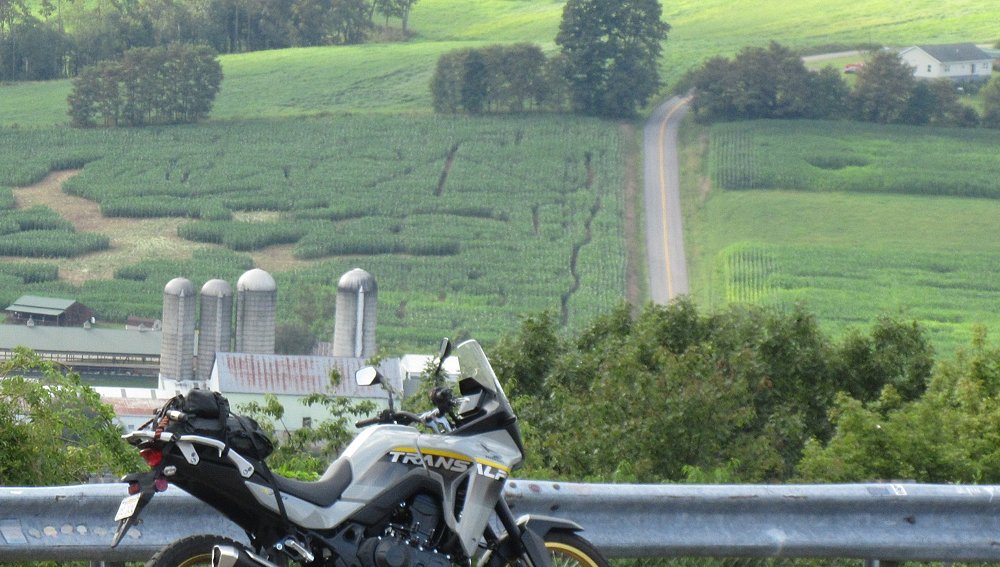
The long haul
Like sport-touring, adventure-touring motorcycles are a spectrum, not a point. Which one is right for you depends on the ratio of adventure and touring in your riding plans. Are you determined to conquer mountain precipices and bounce off boulders like Spurgeon or are you just going to take the occasional shortcut down that graded dirt road, like me?
Since its introduction to the U.S. market last year, the Transalp has earned a reputation as being one of the better choices in the popular middleweight adventure-touring market for riders who leaned toward my end of the spectrum, especially if they wanted to log some long highway miles. I decided to put that to the test as I planned a trip from my home in western Massachusetts to the Mid-Ohio Sports Car Course in Lexington, Ohio, for a MotoAmerica round, and then back to RevZilla HQ in Philadelphia to hand off the Transalp for Spurgeon's flogging. Not wanting to let either the Transalp or myself off easy, I made the first part of the multi-state trek in one day, eventually rolling 615 miles in just under 12 hours to get to Ohio.
After encountering some morning fog while crossing the Taconic Mountains near my home, I began the Interstate highway portion of my long day on I-88 and I-86 across the southern tier of New York. As eastern Interstates go, these are among the best, with typically light traffic and scenery that's pleasant but not dramatic enough to slow you down. The Transalp is no luxury tourer, but as adventure-touring motorcycles go, it feels right at home on the slab.
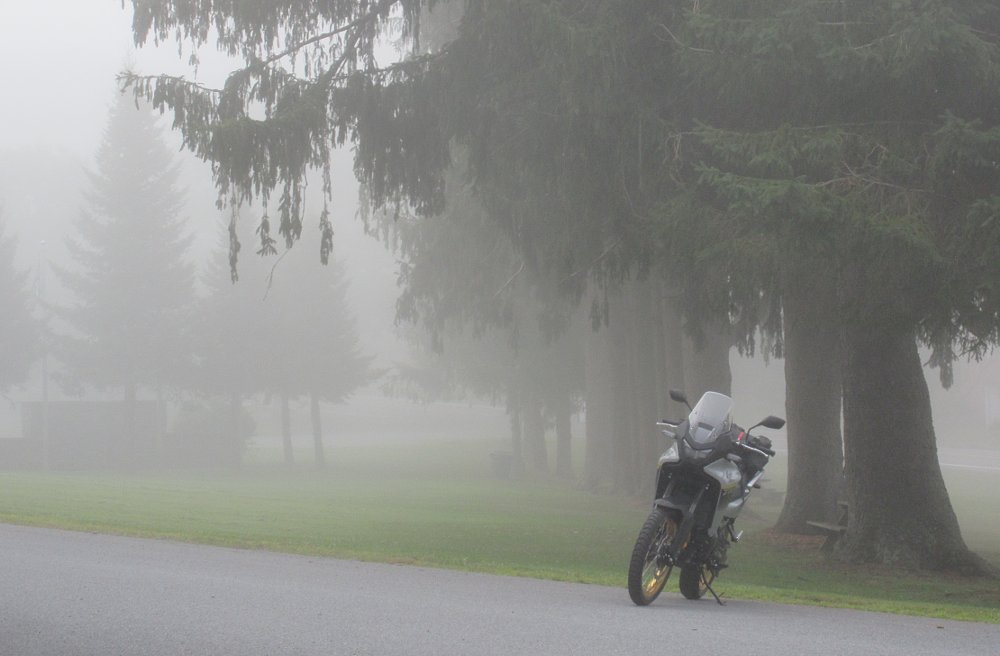
Some find the Honda 755 cc parallel twin lacking in character — Spurgeon may be one of them; we'll see — but I'm confident I'm in the majority of testers who are fans of the engine. Zack praised the engine when he placed the Transalp at the very top of the Daily Rider 2023 leaderboard and again more recently when he tested the Hornet, currently lodged at the top of the 2025 leaderboard. Just about everyone at the Hornet press launch gave the twin positive marks and its playful, revvy nature and growly exhaust note provided enough "character" for those who demand that in their motorcycles. Deep into a 600-mile day, however, I usually find that "character" equates to "pain." Not so with the Transalp. If I searched for it, I could detect very minor buzzing in the footpegs, but the near-total lack of vibration or fueling annoyances meant the engine was in no way tiring.
In part that's because the gearing is tall, or at least feels so to me. Redline is at 10,000 rpm and sixth gear at an indicated 70 mph shows the engine just loping along at about 4,200 rpm. Even an indicated 80 mph, which equates to 4,900 rpm, leaves you just under the halfway point to the redline. There were plenty of times on my multi-day trip on slower highways when fifth gear felt more appropriate than sixth. That led me to wonder how the tall gearing would work for Spurgeon off-road. But that's another story and not mine.
The Transalp gets a new, still non-adjustable windscreen and revised upper fairing for 2025, including a central duct to avoid buffeting. Honda says wind management is improved, but since I didn't ride the 2024, I can't say. For me, at five feet, 11 inches tall, air flow over the screen hit me high on my forehead. If I slouched, I could tuck into a bubble of calm air.
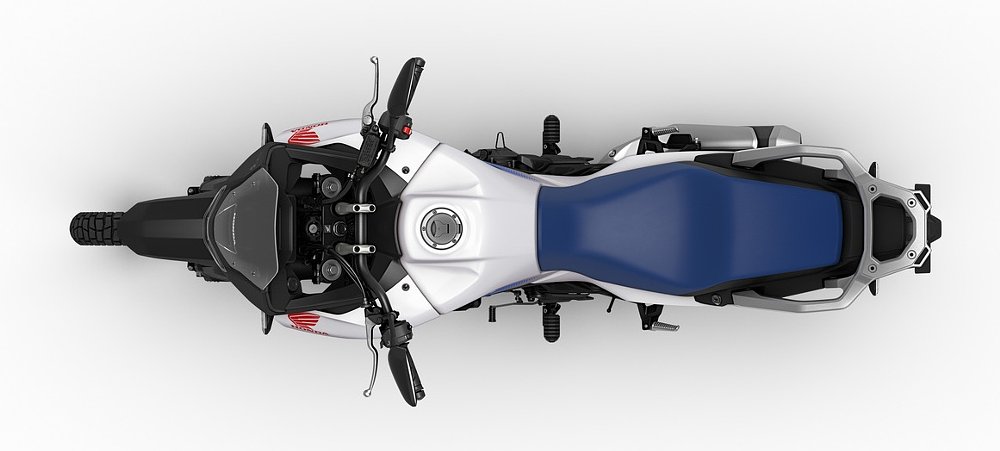
The other determining factor for long-haul comfort is the seat. This was the Transalp's weakest point for me. Not that the seat is bad. By middleweight adventure-bike standards, the Transalp's seat is broader and less dirt-bike-like than something like the seat on the Aprilia Tuareg I was riding around two summers ago. At 33.7 inches, it's also lower than some adventuring competitors.
Before I was even halfway through my long-day test, a pattern had emerged. The Transalp isn't going to lure away the Gold Wing crowd, but by any middleweight adventure-touring standard, it's a comfortable way to cover big miles.
But... it still needs to be an adventure bike. While powering determinedly down the interstate may get you where you need to go most efficiently, taking a well chosen shortcut will make the trip more memorable. So I peeled off I-86 to make my way to Pennsylvania Route 666, a road I hadn't seen in years.
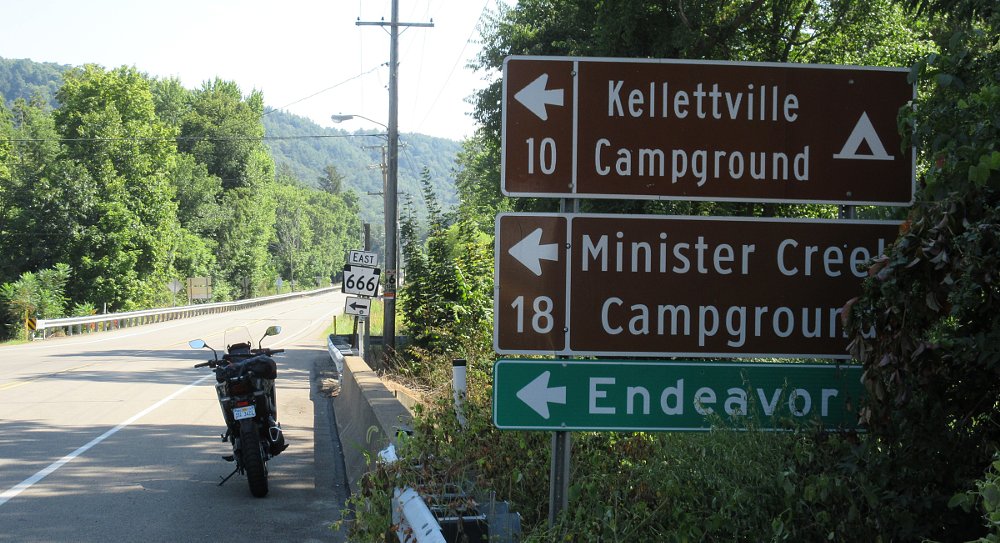
Roughly 35 miles long and completely contained within the Allegheny National Forest, Route 666 is sparsely populated, mostly dotted with getaway cabins I imagine are owned by people more likely to know where the good fishing holes are than which country clubs are more advantageous to join. Despite its diabolical name, Route 666 is mostly sweeping curves with only an occasional unexpected 90-degree bend thrown in to make sure you're paying attention. Going east to west, it starts out with two wide lanes of fresh pavement and then shifts to about a lane and a half of aged and bumpy asphalt, faithfully following Tionesta Creek, not some transportation planning document. That's the thing with the Transalp, however. If there's a road ahead, it really doesn't matter what kind of road. The Transalp is suited for it.
On the bumpier sections of Route 666, and even more so on sharp-edged expansion joints on the highway, I noticed that the suspension wasn't soaking up the jolts the way I expected more than 7.5 inches of travel to do. Admittedly, I didn't adjust the suspension preload, and when I handed the Transalp off to Spurgeon — a far more hands-on suspension-tuning nerd than I'll ever be — he pointed out that I had too much sag in the rear suspension. As you'll see, he did more suspension tinkering in his half of the review and after he was finished, when I picked up the bike from him to return it to Honda, he adjusted the rear suspension sag for my weight. I felt like that made a small improvement over those sharp-edged bumps.
One reason I didn't bother adjusting the suspension during my trip was because it worked so well in every other aspect. I'm far from the first to praise the Transalp's on-pavement handling. At highway speeds, the Metzeler Karoo Street tires howl their displeasure at being used up for such mundane tasks, apparently wishing for some more appropriately adventuresome adventure-bike duty. I just ignore them. They perform excellently, despite their loud protests. The Transalp's handling feels linear and stable. Push the wide handlebar X amount and you get the expected X amount of lean.
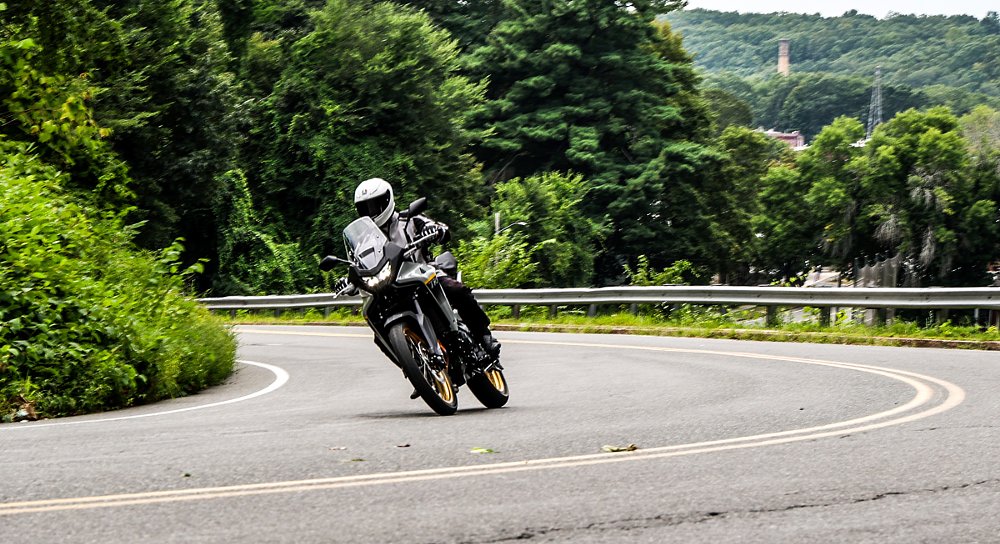
In my local riding before I left on this trip and during the multi-day travels, I rode the Transalp on everything from dirt roads to city streets to four-lane highways and paved country farm roads in Ohio. Toward the end of my trip, I veered south a little on my way to Philadelphia. Just east of Grafton, West Virginia, a section of U.S. Route 50 offers a delicious series of second-gear curves and ascents and descents. The Transalp felt planted, stable, and capable of ample lean angle, which felt even more heroic than it really was because of the additional tallness of the Transalp over, for example, its CB750 Hornet sibling. I've been on that stretch of road several times on a variety of bikes and I didn't feel I was giving up any significant amount of fun by riding it on the Transalp.
There's a reason the Transalp has earned its reputation as the best of the middleweight adventure bikes on pavement.
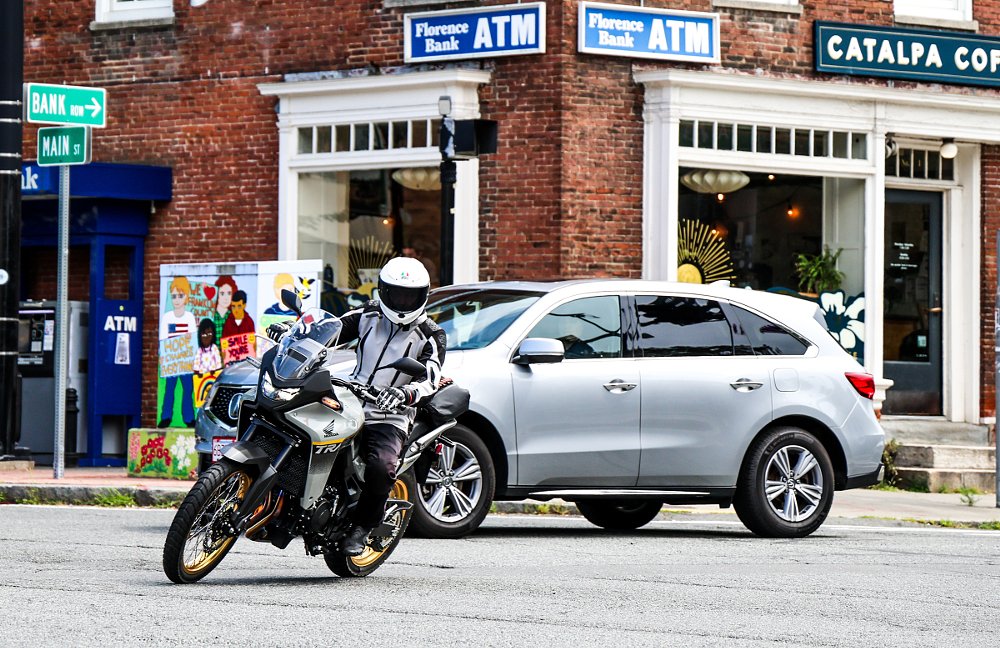
Yet all is not perfection in asphalt land
For all its highway capability, however, the Transalp will still fall short for some riders, due to two compromises. One is the lack of cruise control, a topic of so much extended discussion in the comments section that it's become something of a Common Tread meme. The other is those tires — not because of the noise, which I can live with, or any lack of grip on the pavement, because they work great. No, the problem lies with the inner tubes within. Sure, maybe you want those spoked wheels for the rough stuff off pavement, and sure, at this price point it might be a lot to ask to get more expensive spoked wheels accommodating tubeless tires. But the one hesitation I had in taking off on my 1,500-mile trip was the thought of a flat tire. I'm confident Ari Henning can change an inner tube on the side of a remote dirt track in Alaska while simultaneously being drained of blood by mosquitoes and fending off hungry bears with his tire irons (and that scene is probably captured on a CTXP video somewhere), but in my case I imagined trying to do the same alongside a busy highway with a texting driver drifting unaware onto the shoulder of the road and plastering me before I finished unpacking my wrenches and tire irons.
With tubeless tires, there's a pretty good chance you can plug a typical puncture and, at very least, get on down the road to a more convenient time and place to make a more permanent repair. To fix a punctured tube, you're going to need to carry a lot more tools and do a lot more work. And keep in mind a center stand on the Transalp is a $199.95 accessory.
As for cruise control, I can personally live without it but I do recognize that the lack of cruise control and tubeless tires will cause some riders to cross the Transalp off their lists of potential rides, and I respect that. The lack of those features might not matter as much if the motorcycle weren't so well suited to long-distance on-highway travel in every other way.
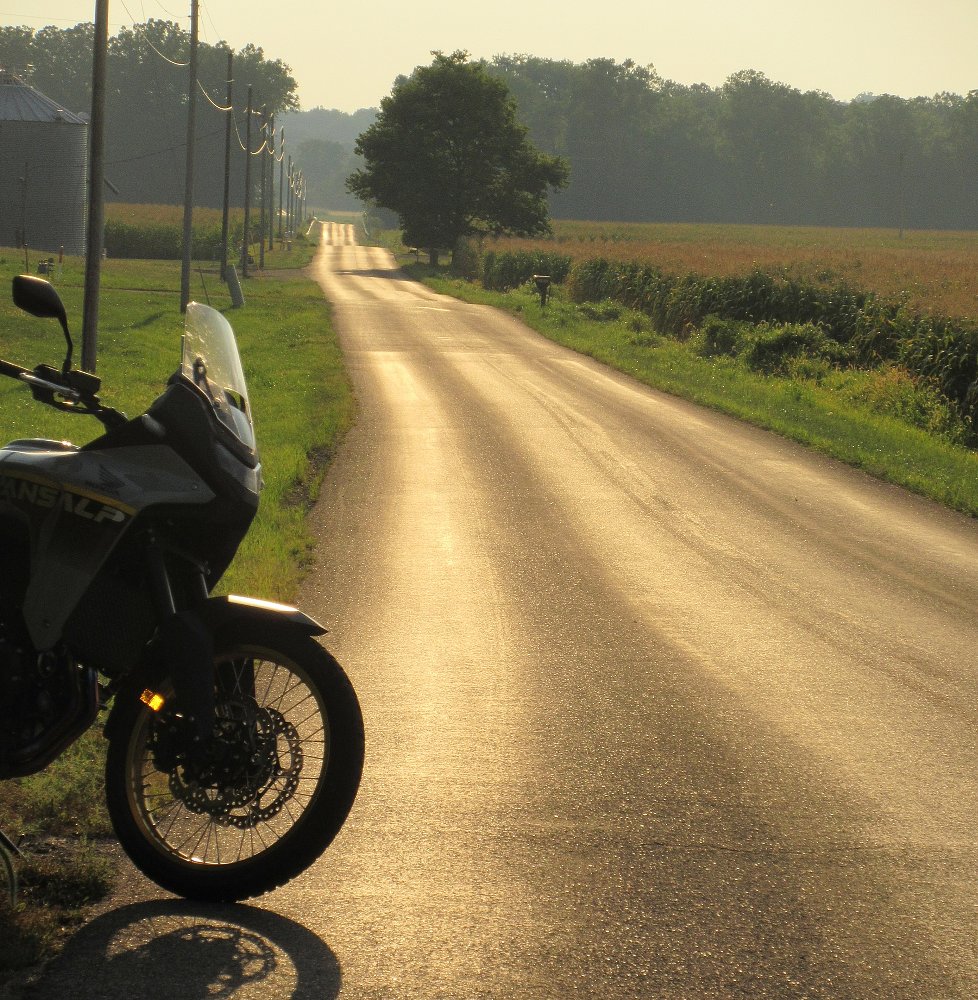
You can get cruise control, adjustable suspension, and spoked wheels that accommodate tubeless tires on the competing Aprilia Tuareg 660 (which topped the 2022 Daily Rider leaderboard, a year before the Transalp's triumph, by the way). But the Tuareg is also 25% more expensive, with an MSRP of $12,499 compared to the Transalp's $9,999. Honda would also point out you can get all those features on an Africa Twin, but then you're also looking at about 10% more weight and 50% more money than the Transalp. Therein lies the dilemma for Honda. Add those features to the Transalp and it's suddenly less differentiated from the Africa Twin and loses some of its price advantage over the middleweight competition. Leave off those features and, for some buyers, the Transalp becomes a non-starter.
As always, there's no right or wrong decision, just a motorcycle that's right or wrong for you. If your version of adventure-touring is heavy on the touring aspect, the Transalp is one model you should consider. If you lean more to the adventure side of the spectrum, then go read Spurgeon's dirtier take before you make up your mind.
| 2025 Honda XL750 Transalp | |
|---|---|
| Price (MSRP) | $9,999 |
| Engine | 755 cc, liquid-cooled, eight-valve, parallel twin |
|
Transmission, final drive |
Six-speed, chain |
| Claimed horsepower | 82 @ 8,500 rpm |
| Claimed torque | 53 foot-pounds @ 7,000 rpm |
| Frame | Steel tubular |
| Front suspension | Showa 43 mm SFF-CA, adjustable for preload; 7.9 inches of travel |
| Rear suspension | Showa single shock, adjustable for preload; 7.5 inches of travel |
| Front brake | Dual two-piston calipers, 310 mm discs, ABS |
| Rear brake | Single-piston caliper, 256 mm disc, ABS |
| Rake, trail | 27.0 degrees, 4.4 inches |
| Wheelbase | 61.5 inches |
| Seat height | 33.7 inches |
| Fuel capacity | 4.5 gallons |
| Tires | Metzeler Karoo Street, 90/90R21 front, 150/70R18 rear (tubed) |
| Measured weight | 472 pounds |
| Available | Now |
| Warranty | 36 months |
| More info | powersports.honda.com |




